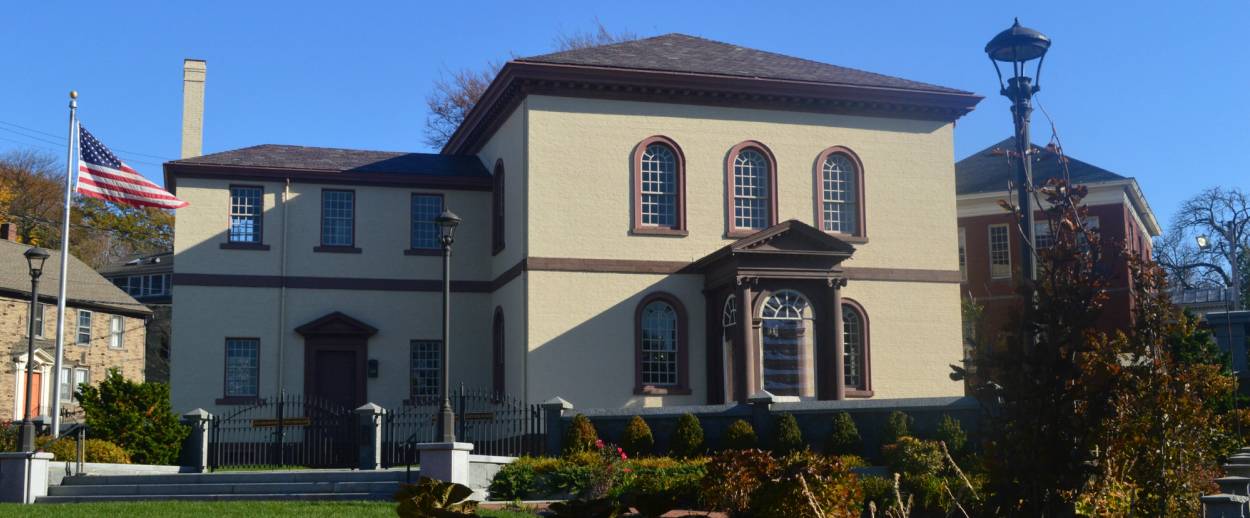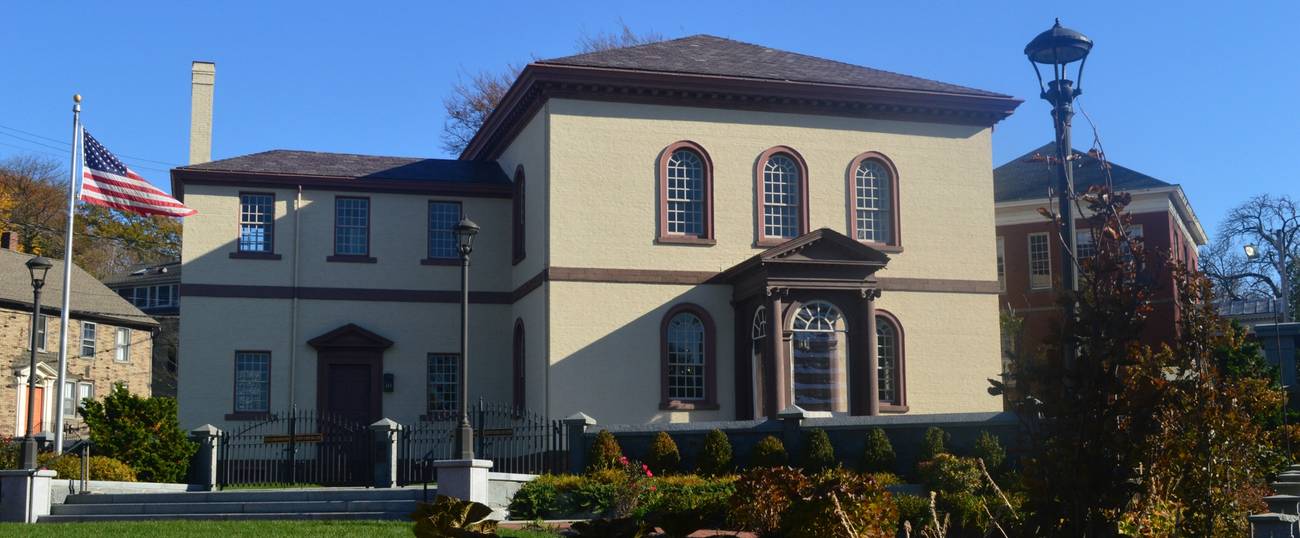Read Every Word of This Ruling That Grants Control of America’s Oldest Synagogue to Its Congregants
The legal battle between Rhode Island’s Congregation Jeshuat Israel and New York’s Shearith Israel has been settled




On Monday, U.S. District Judge John J. McConnell handed down a 106-page ruling in a lawsuit between Congregation Jeshuat Israel, which prays at Touro Synagogue, the oldest synagogue in the U.S. in Newport, Rhode Island, and Shearith Israel, the oldest congregation in America and Touro’s trustee. The judge’s decision, writes Bloomberg’s Noah Feldman, “emphasizes the future over the past, refusing to treat Jewish spaces and objects as relics and instead making them into investments in the future.”
First, a bit of background. Last October, closing statements were made in a Providence courtroom in the case presided over by Justice McConnell who had yet to make a ruling on which of the two congregations was the rightful owner of rimonim estimated to be worth $7.4 million. Congregation Jeshuat Israel, which prays at Touro Synagogue, wanted to sell the bells citing financial issues. Shearith Israel objected, saying Jeshuat Israel had no right to sell the bells because they didn’t belong to them, and that it was a violation of religious beliefs. Shearith also wanted to evict the Rhode Island congregation from Touro, a building that’s more than 250 years old. It was all a bit messy, and it has taken a while for the judge, who at the time said there was “no smoking gun,” to make a ruling.
Here’s what was handed down this week; the court’s conclusions, verbatim:
1. Touro Synagogue is owned in charitable trust for the purposes of preserving a permanent place of public Jewish worship;
2. the pair of Myer Myers Rimonim previously owned by Newport’s earliest Jews is now owned by Congregation Jeshuat Israel, which is free to do with its property as it wishes;
3. Congregation Shearith Israel of New York should be removed as trustee of Touro Synagogue; and
4. Congregation Jeshuat Israel of Newport should be appointed as the new trustee.
The rimonim, it should be noted, are on currently display (as a loan) at the Museum of Fine Arts in Boston, which had offered to buy the item. According to the court documents (pg. 2 footnote), the museum has since withdrawn its offer.
Perhaps what’s most incredible about this case is Justice McConnell’s ruling itself, which is a living document of niche Jewish history, tracing all the way back to the 17th century when Jews first came to Newport, Rhode Island, a wonderful little New England city once known as the “Garden of America.”
The 106-page document can be found here. Below, I’ve parsed out some interesting sections or tidbits from the first thirty pages of the document, which you should read in full or, at the very least, roam around it at your leisure. It’s free non-fiction. So boil some water, steep a bag of Lipton, get comfortable, and read on.
— For a quick background about the dispute, begin with the “Findings of Fact” section on page 4.
— For an incredible history of the Touro Synagogue and the Jews who settled in Newport Rhode Island after escaping the Spanish Inquisition, see the “Narrative” section on page 8.
— The Jeshuat in Jeshuat Israel (meaning, “The Salvation of Israel,” used to be spelled “Yeshuat” and the congregation first met in private houses and called themselves Nefutsé Israel, or “The Scattered of Israel.” See page 11.
— The Touro synagogue took three years to build, from 1759-1762. At the time, an estimated 60 to 70 families lived in Newport, RI. See page 16.
— The rimonim were made by the “great” Jewish silversmith Myer Meyers, who also made a “circumcision shield” for the congregation’s mohel, Moses Seixas, who himself would later become the synagogue’s trustee and was known as the “lay leader of the Remnant of Israel in Newport.” Once, Meyers was paid 12 shillings to “mend” the pair of rimonim. See pages 21 and 24.
— Seixas corresponded with President George Washington. See page 26.
— The “Jews Leave Newport, Rhode Island” section on page 27 is a key passage because it describes the death of Seixas, and the time when the synagogue “completely ceased” around 1793. It also introduces the entry of Shearith Israel into the story, with the congregation agreeing to keep Torah scrolls and the rimonim in question, safe. See page 28.
Read the entire ruling here.
Related: Out of the Ghetto
Jonathan Zalman is a writer and teacher based in Brooklyn.